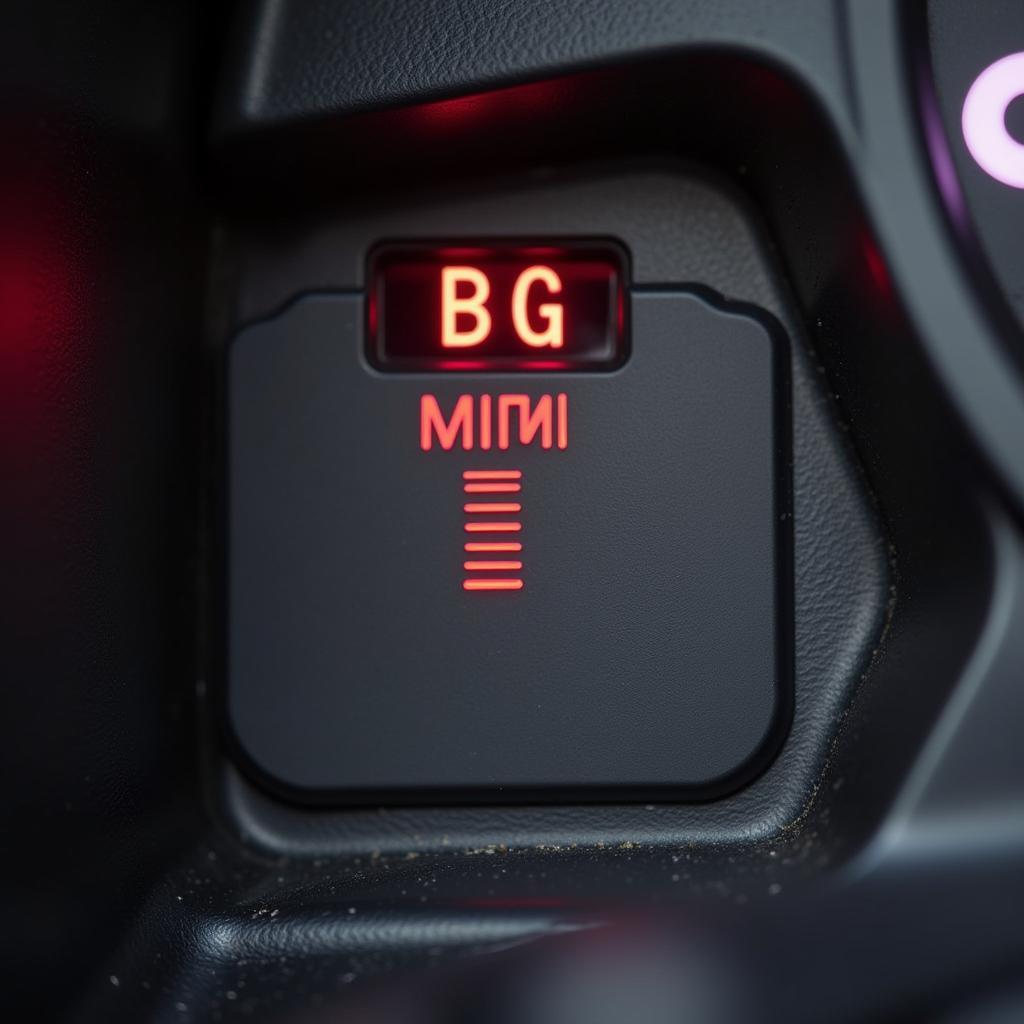The brake warning light on your dashboard is a crucial safety feature, and when it illuminates in your 1996 Toyota Avalon, it’s crucial to address the issue promptly. This light is your car’s way of telling you something is amiss with the braking system. Ignoring it could lead to reduced braking performance and potentially dangerous driving situations.
This comprehensive guide delves into the common causes of a lit brake warning light in a 1996 Toyota Avalon and provides troubleshooting steps to help you diagnose and potentially fix the issue.
Understanding Your Brake Warning Light
The brake warning light is designed to activate in two main scenarios: when you engage the parking brake and when there’s a problem with your hydraulic brake system. If the light comes on while the parking brake is disengaged, it indicates a fault within the hydraulic system that needs immediate attention.
Common Causes of a Lit Brake Warning Light
Several factors can trigger the brake warning light in your 1996 Toyota Avalon. Here are some of the most prevalent:
-
Low Brake Fluid: This is the most common culprit. Brake fluid is essential for transmitting force from the brake pedal to the wheels, and a leak or low fluid level can significantly compromise braking performance.
-
Worn Brake Pads: Brake pads naturally wear down over time. When they reach a certain level of thinness, the brake pad wear sensor will trigger the warning light, signaling it’s time for a replacement.
-
Faulty Brake Caliper: A sticking or malfunctioning brake caliper can cause uneven brake pad wear, pull the vehicle to one side while braking, and illuminate the brake warning light.
-
Brake Master Cylinder Issues: The brake master cylinder is responsible for distributing brake fluid to the wheels. If it malfunctions or develops a leak, it can lead to a loss of braking pressure and trigger the warning light.
-
ABS Problems: While less common, a problem with the Anti-lock Braking System (ABS), such as a faulty sensor, can also activate the brake warning light.
Troubleshooting Your Brake Warning Light
Before you start troubleshooting, remember that safety is paramount. If you’re uncomfortable working on your vehicle, it’s always best to consult a qualified mechanic.
Here’s a step-by-step guide for basic troubleshooting:
-
Check the Brake Fluid Level: This is the first and easiest step. Locate the brake fluid reservoir (refer to your owner’s manual if needed), and check the fluid level. It should be between the “MIN” and “MAX” lines. If it’s low, add the correct type of brake fluid for your 1996 Toyota Avalon, but be sure to investigate the cause of the low level, as it likely indicates a leak.
-
Inspect for Leaks: Carefully examine the area around the master cylinder, brake lines, and calipers for any signs of fluid leakage. Brake fluid is typically clear or slightly yellowish.
-
Check the Brake Pads: If the brake fluid level is normal and there are no visible leaks, the next step is to inspect the brake pads. Look for uneven wear patterns or pads that are worn down close to the metal backing plates.
-
Listen for Unusual Noises: Unusual noises while braking, such as grinding or squealing, can indicate worn brake pads or other brake component issues.
-
Feel the Brake Pedal: Pay attention to how the brake pedal feels when you press it. Does it feel spongy, go too low to the floor, or require more pressure than usual to stop the car? These can be signs of air in the brake lines or a failing master cylinder.
When to Seek Professional Help
While some brake issues can be addressed with basic troubleshooting, it’s crucial to seek professional help if:
- You discover a brake fluid leak.
- You’re uncomfortable working on your vehicle’s brake system.
- The brake warning light remains illuminated after checking the fluid level and visually inspecting the system.
- You experience any changes in brake pedal feel or performance.
Conclusion
Addressing a brake warning light in your 1996 Toyota Avalon should always be a top priority. By understanding the common causes, performing some basic troubleshooting, and knowing when to call in a professional, you can help ensure your safety and the longevity of your vehicle’s braking system. Remember, a well-maintained braking system is crucial for a safe and enjoyable driving experience.

